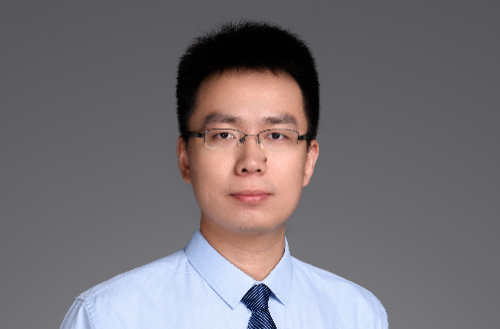Faculty

Dr. Hao TANG currently is a Research Assistant Professor of Department of Biomedical Engineering in Southern University of Science and Technology (SUSTech). His research interests include nano-biomedicine, drug delivery and biomedical polymers, etc. He received his Ph.D. degree in Beijing University of Chemical Technology in 2018. He began to work as a postdoc at SUSTech/Southeast University in 2018 and was promoted to a senior research scholar in 2020. He has been awarded "High-Level Professional in Shenzhen". He has published more than 10 academic papers in scientific journals including Angew. Chem. Int. Ed,Adv. Drug Delivery Rev.,Biomacromolecules,Chinese J. Polym. Sci., with more than 100 citations. He has chaired Youth Program funded by National Natural Science Foundation of China and General Program funded by China Postdoctoral Science Foundation.
Education
2013.09-2018.06, PhD in Chemical Engineering and Technology, Beijing University of Chemical Technology
2009.09-2013.06, Bachelor in Material Science and Engineering, Southwest Jiaotong University
Working Experiences
2021.09-now, Research Assistant Professor, Southern University of Science and Technology
2020.12-2021.09, Senior Research Scholar, Southern University of Science and Technology
2018.12-2020.11, Postdoctoral Fellow, Southern University of Science and Technology /Southeast University
Representative publications
[14] H. Tang, Q. Li, W. Yan, X. Jiang*, Reversing the Chirality of Surface Ligands Can Improve the Biosafety and Pharmacokinetics of Cationic Gold Nanoclusters, Angew. Chem. Int. Ed. 2021, 60, 13829.
[13] H. Tang, X. Zhao, X. Jiang*, Synthetic Multi-layer Nanoparticles for CRISPR-Cas9 Genome Editing, Adv. Drug Delivery Rev. 2021, 168, 55-78.
[12] M. Chen, R. Dong, J. Zhang, H. Tang, Q. Li, H. Shao*, X. Jiang*, Nanoscale Metal–Organic Frameworks That are Both Fluorescent and Hollow for Self-Indicating Drug Delivery, ACS Appl. Mater. Interfaces 2021, 13(16), 18554–18562.
[11] X. Li, M. Zha, Y. Li, J. Ni, T. Min, T. Kang, G. Yang, H. Tang, K. Li*, X. Jiang*, Sub-10 nm Aggregation-Induced Emission Quantum Dots Assembled by Microfluidics for Enhanced Tumor-Targeting and Reduced Retention in the Liver, Angew. Chem. Int. Ed. 2020, 59, 21899.
[10] X. Zhao, J. Jia, R. Dong, J. Deng, H. Tang, F. Hu, S. Liu*, X. Jiang*, Bimetallic Nanoparticles against Multi-drug Resistant Bacteria, Chem. Commun. 2020, 56, 10918-1092.
[9] Y. Yang, Y. Chen, H. Tang, N. Zong, X. Jiang*, Microfluidics for Biomedical Analysis, Small Methods 2020, 4, 1900451.
[8] H. Tang, J. Zhang, J. Tang, Y. Shen, W. Guo, M. Zhou, R. Wang, N. Jiang, Z. Gan*, Q. Yu*, Tumor Specific and Renal Excretable Star-like Triblock Polymer–Doxorubicin Conjugates for Safe and Efficient Anticancer Therapy, Biomacromolecules 2018, 19(7), 2849-2862.
[7] H. Tang, J. Tang, Y. Shen, W. Guo, M. Zhou, R. Wang, N. Jiang, Z. Gan*, Q. Yu*, Comb-like Poly (N-(2-hydroxypropyl) methacrylamide) Doxorubicin Conjugates: The Influence of Polymer Architecture and Composition on the Biological Properties, Chinese J. Polym. Sci. 2018, 36(11), 1225–1238.
[6] J. Zhang, H. Tang, Y. Shen, Q. Yu*, Z. Gan*, Shell-Sheddable Poly (N-2-hydroxypropyl methacrylamide) Polymeric Micelles for Dual-Sensitive Release of Doxorubicin, Macromol. Rapid Comm. 2018, 1800139.
[5] J. Liu, H. Tang, P. Mi*, Y. Wei*, Current Status and Prospect of Cancer Nanomedicine in Clinical Translation, Sci. Technol. Rev. 2018, 36 (22), 118-126.
[4] T. Shen, X. Xu, L. Guo, H. Tang, T. Diao, Z. Gan, G. Zhang*, Q. Yu*, Efficient Tumor Accumulation, Penetration and Tumor Growth Inhibition Achieved by Polymer Therapeutics: The Effect of Polymer Architectures, Biomacromolecules 2017, 18(1), 217-230.
[3] X. Yan, Q. Yu*, L. Guo, W. Guo, S. Guan, H. Tang, S. Lin, Z. Gan*, Positively Charged Combinatory Drug Delivery Systems against Multi-Drug-Resistant Breast Cancer: Beyond the Drug Combination, ACS Appl. Mater. Interfaces 2017, 9(8), 6804-6815.
[2] N. Du, W. Guo, Q. Yu*, S. Guan, L. Guo, T. Shen, H. Tang, Z. Gan*, Poly (d, l-lactic acid)-block-poly (N-(2-hydroxypropyl) methacrylamide) Nanoparticles for Overcoming Accelerated Blood Clearance and Achieving Efficient Anti-tumor Therapy, Polym. Chem. 2016, 7(36), 5719-5729.
[1] Q. Yu, Z. Wei, J. Shi, S. Guan, N. Du, T. Shen, H. Tang, B. Jia, F. Wang, Z. Gan*, Polymer–Doxorubicin Conjugate Micelles Based on Poly (ethylene glycol) and Poly (N-(2-hydroxypropyl) methacrylamide): Effect of Negative Charge and Molecular Weight on Biodistribution and Blood Clearance, Biomacromolecules 2015, 16(9), 2645-2655.


